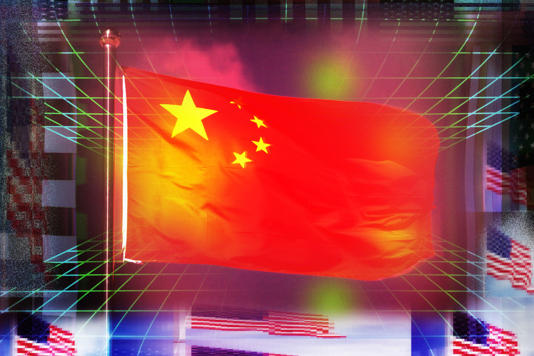China’s open-source AI is no longer just a buzzword it’s a strategic reality shaking the foundations of U.S technological dominance. In recent months, Beijing’s AI innovators have launched a series of open models that are not only technically competitive but also freely accessible, sparking concerns in Washington and Silicon Valley about losing the AI leadership race.
China’s AI journey has been nothing short of meteoric. Starting with the breakthrough DeepSeek R1 reasoning model in January, the country quickly followed with Alibaba’s Qwen, Moonshot, Z.ai, and MiniMax. These aren’t just experimental tools they are advanced, fully functional AI models that developers can download, modify, and integrate into commercial or research projects without restrictive licenses.
In the words of Dr. Li Zhen, an AI researcher at Tsinghua University By making high performance models open-source, we are lowering the barrier to AI innovation globally but it also means China becomes a central hub in the AI supply chain.
This model of openness has created a snowball effect international startups, researchers, and even Western companies are experimenting with Chinese AI models because of their accessibility and surprisingly strong performance.
Why Washington and Silicon Valley Are Alarmed
From a geopolitical standpoint, the U.S. has traditionally relied on its technological lead to maintain global influence. The rise of China’s open source AI challenges this advantage on several fronts. If Chinese models become the most widely adopted, they could define AI protocols, ethics, and even coding frameworks globally.
Economic Competition Free access to high quality AI models undercuts U.S companies like OpenAI and Anthropic, which depend on subscription or API based monetization. National Security Risks Open models can be modified in ways that might bypass U.S safety controls, raising cybersecurity and misinformation concerns.
An official at the U.S. Department of Commerce, speaking anonymously, noted. This isn’t just about technology it’s about the strategic future. If the world builds on Chinese open-source AI, the U.S risks being a follower, not a leader.
How DeepSeek R1 Disrupted the Market
When DeepSeek R1 launched, it was initially seen as a niche reasoning model. But its performance in multi step problem solving surprised industry watchers. Within weeks, developers in India, Africa, and Eastern Europe began using it for educational tools, medical diagnostics, and even local language chatbots.
A Kenyan startup, EduBridge AI, reported that using DeepSeek R1 reduced their development costs by 70% compared to building with OpenAI’s GPT-4 API.
For us, it was a game changer, says co-founder Miriam Njoroge. We could customize it deeply for Swahili and regional contexts, something that would have been prohibitively expensive with U.S based APIs.
This case illustrates why China’s open-source AI poses such a competitive challenge it combines cost efficiency with flexibility.
The Technical Edge
Ethan Brooks, a Silicon Valley AI engineer, explains that the Chinese approach isn’t just about open access it’s about iterative speed. Chinese labs are pushing out model updates in weeks, not months. Their ability to rapidly respond to user feedback gives them a dynamic advantage over slower, more closed systems.
According to Brooks, while some U.S firms focus heavily on safety alignment and closed ecosystems, Chinese teams embrace a community driven development cycle that accelerates innovation.
As part of my own research, I tested Alibaba’s Qwen for a natural language processing project. What stood out was its multilingual adaptability it handled English, Mandarin, and Arabic with near native fluency. Even more impressive, I could fine tune the model locally without sending data to external servers, a crucial advantage for privacy focused applications.
While the model wasn’t flawless it occasionally struggled with niche domain accuracy it offered 90% of the capability of leading Western models at zero cost. For a small business or solo developer, that’s a massive deal.
The Open-Source Advantage
From a strategic lens, open-source AI offers four key advantages that explain China’s rapid traction. Lower Development Costs Businesses avoid recurring API fees. Customization Freedom Models can be adapted for local languages, industries, and cultural nuances.
Decentralized Innovation Global developers can improve models without waiting for corporate updates. Faster Adoption in Emerging Markets Countries without big AI budgets can still build competitive solutions.
However, these benefits come with risks without centralized safety oversight, open models can be adapted for malicious purposes. This is precisely why Washington is pushing for export controls and safety standards targeting advanced AI.
The Battle for AI Standards
One of the most critical battlegrounds is who gets to set the rules for AI. If Chinese open-source AI frameworks dominate, the ethical guidelines, safety benchmarks, and technical norms could align more with Beijing’s governance philosophy than Washington’s.
Tech policy analyst Sara Kim warns. It’s not just about code it’s about values. If the underlying frameworks are built in China, their view of acceptable AI use will inevitably influence the global market.
The U.S still has undeniable strengths world class AI research institutions, deep venture capital networks, and unmatched cloud infrastructure. But to counter China’s open-source AI push, experts suggest. Investing in open models backed by American companies.
Creating public private partnerships to make U.S AI accessible in emerging markets. Collaborating with allies to promote shared AI standards. Without such steps, the current momentum could tilt permanently toward Chinese leadership.
A Turning Point in the AI Race
China’s open-source AI movement is more than a tech trend it’s a geopolitical power play. By making advanced AI free and modifiable, China is not only empowering global developers but also shaping the very foundation of the future AI ecosystem.
Washington and Silicon Valley now face a choice compete in openness or risk becoming irrelevant in the next era of artificial intelligence.

